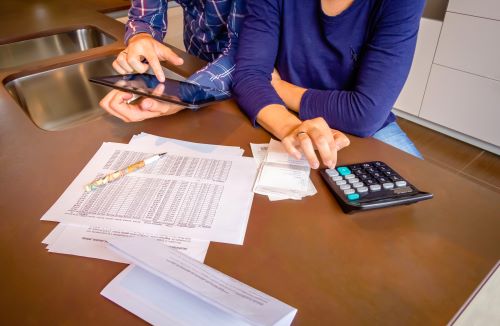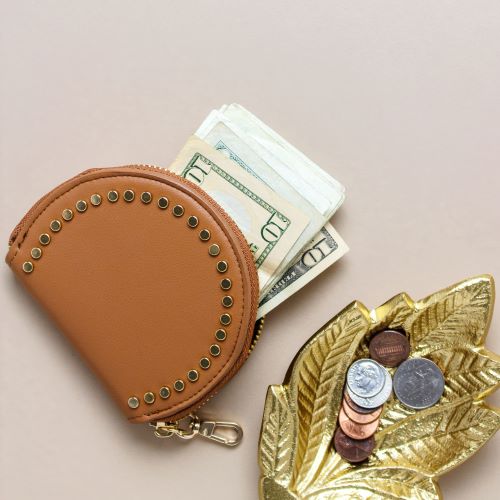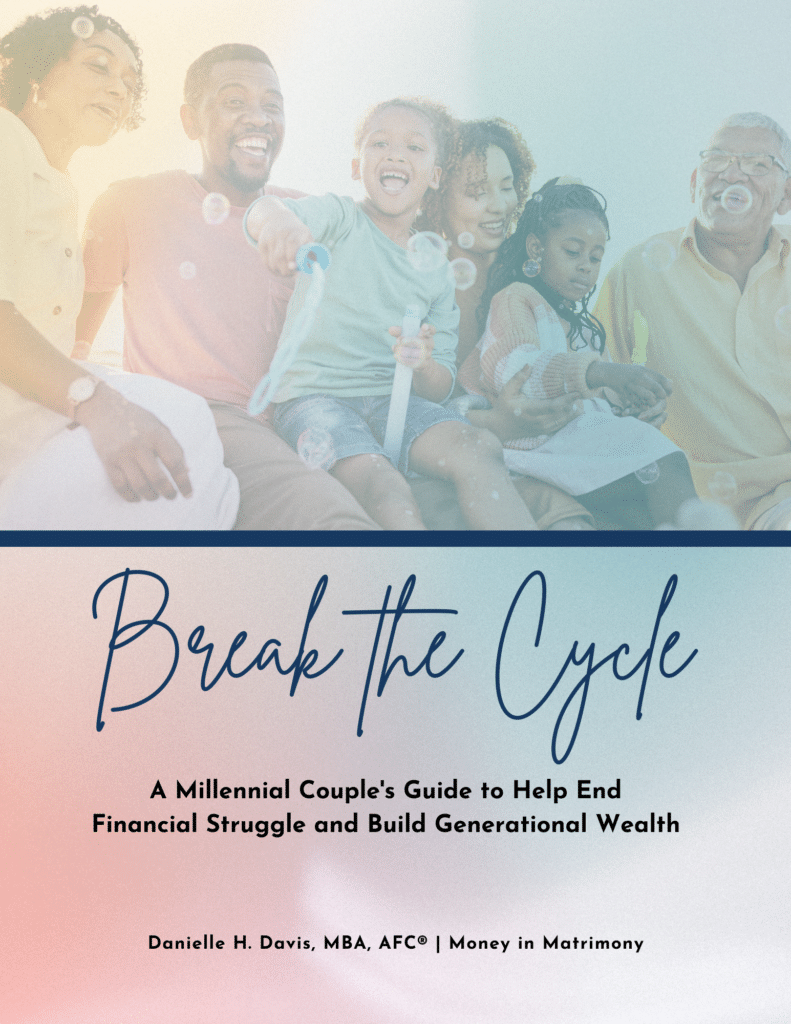How to Declutter Your Finances in 30 Days
This post may contain affiliate links which means that I will receive a small commission for purchases made through those links, at no cost to you.
There are so many areas of our finances in which we can improve. However; without proper research or guidance, it’s hard to determine which areas will have the greatest impact and which ones we should focus on first. Hence the reason why I created the 30 Day Money Challenge, which will show you how to declutter your finances in 30 days! If you are tired of letting your finances wear you down, then you are certainly in the right place!
I really dug deep to think about the tasks that would help you to obtain the quickest wins first. I had so many ideas that I could have really made this into a 60-day money guide, but I did not want to overwhelm you. So, we will start slow. I ask you to trust yourself while on this journey as I teach you how to declutter your finances in 30 days.
Before you get started, go ahead and download the 30 Day Money Challenge so that you can cross each task off as you complete it. Feel free to use this blog post as a resource to help you complete the self-paced guide. Let’s go ahead and dive in!

ADJUST YOUR MINDSET
Day 1 – Be grateful for your journey
One of the key ways to be successful in anything is to show gratitude. Be thankful for where you are and where you are going. Try not to beat yourself up because of past mistakes. Consider this as a fresh new starting point. Be grateful that you are able to embark on this new journey toward improving your finances.
Day 2 – Understand the benefits
If you don’t understand how organizing your finances will benefit you, then you won’t take the time to put in your best effort into improving them. When your finances are disorganized, several other areas in your life also tend to be disorganized.
Some of the key benefits of organizing your finances are that it:
- Helps you to understand how your money is being spent
- Teaches you what you value most
- Shows you which areas you need to improve
- Reduces stress and tension between spouses
- Helps you to create a plan to pay down debt quickly
- Allows you to take control of your money instead of having money control you
- Helps you to create a savings plan
- Allows you to pay yourself first
- Forces you to improve other areas of your life
- Helps you to attain your version of financial freedom much faster
Day 3 -Write down your goals
I can’t stress enough about how important it is to write down your long and short term goals. It is so important that I wrote an entire blog post on this topic. I talk about utilizing S.M.A.R.T. goals and I even give you a few examples of how to actually set goals that work. If you don’t write down your goals, how would you know where you are trying to aim? An even better question might be how would you know what steps you needed to get there? You can find that post here: 4 Simple Steps to Catapult Your Financial Goals.
Day 4 – Create a financial vision board
This is another important step that people often miss, but it carries so much weight. I’m sure you’ve heard plenty of celebrities discussing the importance of creating a vision board. However; I’m asking you to take it one step further and create a financial vision board. I’ve personally seen the impact this can have on your life and I am a firm believer that if you keep the vision board in front of your eyes daily and believe what you’ve put out there in the universe, that you will reach your goals. Allow yourself to just dream! To get started, you can find more information here: 4 Simple Steps to Catapult Your Financial Goals and in this video by Terri Savelle Foy.
Day 5 – Listen to a motivational podcast
Several years ago, I stumbled upon a financial podcast that forever changed my life. My husband and I implemented what we learned and today we are in a much better financial position than we were during that time. We listened, learned, then implemented, which yielded a result of increased income.
Although we are both college-educated, that’s not what really moved the needle for us. It was the free podcast that I listened to one day in my car. So this just goes to show that you don’t have to get multiple degrees to learn more. You can read books, listen to podcasts, watch videos or even talk to people more knowledgeable than you are about a certain topic. Ignorance costs, but the more you learn, the more you earn!
If you are ready to take the dive, download any of the following apps to begin listening to podcasts. Feel free to use apps such as Apple Podcast, Stitcher, Castbox or Spotify. YouTube is also an option to watch and/or listen to podcast episodes if you are not interested in downloading any new apps.

GET ORGANIZED
Day 6 – Clean out your wallet/purse
Why?
So you might be asking what is the purpose of this task. Great question! I’m glad you asked. Basically, a wallet is a breeding ground for junk to pile up, while also being the place in which we keep our financial currency such as cash, credit cards, insurance cards, discount cards, coupons, etc. When our purses and wallets are cluttered, we miss out on opportunities to save money or earn points that could be applied towards future discounts.
How?
Now that you understand why it’s important to keep your wallet and purse clutter-free; let’s talk about how to actually do it.
- Take everything out of your wallet/purse.
- Throw any gum wrappers, old tissues, and crumbs away.
- Make separate piles for receipts, coupons, gift cards, and any remaining items that need to be discarded.
- Put all credit cards to the side. (additional details on this item below)
- Go through each pile and get rid of anything that is expired or that is no longer needed.
- Put any receipts from donations and business/job expenses in a Ziploc bag designated for tax deductions.
- If you plan to return anything, grab the receipt, the item, and place it all in a bag together. (more about this in a later section).
- After all sorting has been done, place all items (except credit cards) neatly back into the wallet or purse.
- Check your wallet or purse every 2-3 days to ensure it remains clean.
DAY 7 – Organize your financial documents
In the unlikely event of a disaster or emergency, most people cannot easily and quickly grab all of their financial documents. You won’t have time to go up to the attic or search through stacks of paperwork to find what you need. Hence, the reason why I created The Ultimate Emergency Financial Checklist. Use this document as a guide if you have no idea where to start when it comes to organizing your important documents.
ASSESS YOUR NUMBERS
Day 8 – determine your net worth
Your net worth, in it’s simplest terms, is a measure of wealth. It is the sum of everything you own (assets) minus everything you owe (liabilities). Knowing and understanding your net worth is important because it helps you to identify areas in which you need improvement. It gives you a big picture of all of your assets and liabilities. To complete this exercise, I found a simple net worth calculator created by Bankrate.
Day 9 – Review your credit report and score
WHY?
We should all be checking our credit report at least once each year. It is important that you check your credit report because sometimes you might find discrepancies. There might be a debt that can be removed, which in turn could possibly boost your score, allow for better interest rates, and save you money.
Some of these issues might be easy fixes and others not so much. For example, if you and one of your parents have the same name, check that their credit history is not showing up on your report. This might be easy to resolve if the child can prove that the debt actually belongs to their parent.
How?
Annual Credit Report typically allows you FREE one-time access to each of your credit reports from all three of the major credit bureaus: Equifax, Experian, and TransUnion. More recently, due to the Equifax Data Breach, you might be eligible to receive 6 additional Equifax credit reports as of Jan. 2020 via Equifax. You will also get free access to your credit scores via Equifax. Just contact Equifax for more information.
If you want to maximize the number of times you can check your credit reports, then use this little hack. Instead of accessing all 3 of the credit reports from Annual Credit Report at the same time, stretch it out and download one report each month. This way, you can access a total of 9 reports (6 from Equifax and 3 from Annual Credit Report) during different times of the year, instead of getting all 3 at the same time.

Day 10 – List all sources of income and expenses
Now, here is where we start to get more serious about digging into the numbers. You can’t expect to reach any of your financial goals until you actually sit down and look at every number. In this exercise, you need to understand how much money is actually being brought into the home versus what is leaving out of the home. This means that couples will need to work together to ensure that all income and expenses are accounted for. If you need guidance on how to work with your spouse during the next several exercises, then read here: 7 Strategies to Help You Budget Better With Your Spouse.
So, let’s start with the income piece first. Gather relevant documents in order to create a list of all income within the household.
Sources of income might include:
- Salary/Wages
- Hobbies/Side-Hustles
- Bonuses
- Tips
- Alimony
- Child Support
- Rental Income
- Refunds
- Other Misc.
Next, create a list of all of your household expenses. Anything that you need to buy, give, or save for should be included in this list. Also, try to include any one-off, quarterly or yearly items in this list. Think about everything you’ve had to spend money on and add it to the list.
Expenses might include:
- Giving/Tithing
- Saving
- Food
- Mortgage/Rent
- Transportation
- Utilities
- Daycare
- Education
- Personal Care
- Medical
- Cell Phone
- Insurance
- Home Maintenance
- Auto Maintenance
- Taxes
- Debt Repayment
- Fun and Entertainment
- Dining Out
- Misc.
Of course, each household will have varying types of income and expenses. Your budget will need to be tailored to meet you and your spouse’s specific needs. Remember that the goal is to have more money coming in that what is currently going out. If this is not the case in your budget, then the remaining exercises within this guide will certainly help you identify ways to get there.
Day 11 – Evaluate your spending habits
One of the best ways to find holes in your budget is to track your spending habits. Determine where most of the money is being spent and which areas you can cut back. Is dining out and unused subscriptions draining your budget? Make the necessary changes so that you can utilize the benefit of having more money to apply towards other expenses. To begin the process of tracking your spending, you can choose one of two methods:
- Automatically download bank and credit card transactions by linking your accounts to an app of your choosing. Apps such as Mint and Every Dollar will analyze the data for you.
- Manually download bank and credit card transactions from the specific financial institution and analyze the data yourself for the last 30-60 days.
After you and your spouse have chosen a method to follow, then the next step will be to determine which areas you can cut back on. I mentioned dining out and unused subscriptions above because those items are two of the biggest money wasters. We often underestimate how much we are spending in these areas. Each category will require some evaluation. However; it might be best to start with these two.
Day 12 – Create a realistic financial plan
The reason I decided to include this step after you and your spouse have tracked your spending is so that you can use your previous spending figures as a starting guide to creating the actual budget. Reviewing previous spending habits first removes much of the guesswork out of determining what a more realistic budget should look like. In order to create a budget, the following must be done:
- Discuss what type of budget will work best for your household
- Zero-Based – every dollar is assigned a name
- 50/30/20 – allocate 50 % – Needs, 30% – Wants and 20% – Savings Goals
- Create your own
- Determine pay dates and create the budget before the paycheck arrives
- Decide how much you will need to allocate toward each item
- Include fun money and a misc. buffer for emergencies
- Factor in quarterly or yearly items
I believe the hardest part will be figuring out the type of budget you want to use and how much to allocate toward each item. In my household, we use the zero-based budgeting method in which I assign every dollar a name. Then, I created the actual budget in apps such as Mint and Every Dollar. An alternative to using apps to manage your budget is a good old fashioned pen and paper. I actually seem to enjoy the latter method more, but you and your spouse have to decide what’s best for you.
Day 13 – Add up the total amount of current debt
Debt is any money that you borrowed and still owe. This can include but is not limited to credit cards, student loans, car loans, mortgages, I owe you’s, etc. In this exercise, I only want you to calculate the total amount of debt you have incurred. Most people have no idea how much debt they have and oftentimes, the amount of debt is hugely underestimated. If you don’t know how much you owe, call the creditor to get the most accurate number. This will serve as your wake-up call! It is important to know what you owe so that you can create a tailored plan to pay off the debt. We will talk about actually creating a debt payoff plan in the next exercise.
DAY 14 – Create a plan to get rid of debt
One of the best things you can do for your finances is to eliminate as much debt as possible. By eliminating debt, you in return, free up income that can be used to knock out more debt, build your emergency fund, invest or do whatever you please with it.
After you have figured out the total amount of debt you owe, grab a pen and paper or feel free to use Microsoft Excel. Next, list each of your debts beginning with the debt that has the lowest balance, ignoring the interest rates. This method of paying down debt is called the debt snowball method.
Now, start making the minimum payments on all balances except for the debt with the lowest balance. Any extra money, in addition to the minimum payment, should be paid towards the debt with the lowest balance. Repeating this process over and over will help you to obtain maximum results.
While you may end up paying just a tad bit more in interest, using the debt snowball method will allow you to gain quick wins and momentum. So as long as you stay on track, you will actually see your debt disappear one by one.
Using the debt snowball method has helped my husband and I pay off thousands of dollars worth of student loans, credit cards and auto loan debt. I’m telling you, it works! If you need more info on how to use the debt snowball method, I would suggest reading the following: Everything You Need to Know About the Debt Snowball Method.
STOP WASTING MONEY
Day 15 – Discontinue use of all credit cards
If you are actively working to reduce debt and achieve your version of financial freedom, then you will have to put the credit cards down. You won’t be able to make a dent in the debt if you keep adding to the debt. The best way I’ve found to help you accomplish this is to simply use cash for purchases. Feel free to pay your monthly bills via your checking account, etc. However; discretionary expenses such as food, gas, grooming, groceries, clothing, dining out, gifts, and entertainment should be paid for in cash. To take it a step further, something that I’ve used many times in my life is called the cash envelope system.
Cash Envelope System
The cash envelope system helps you to track how much money you have in each budget category for the month by keeping the cash in separate envelopes. At the end of the month, you can see how much cash is left by simply looking in your envelope.
Here’s how it works:
- Decide which discretionary items you want to use for the cash envelope system
- Determine how much you will budget for each envelope
- Insert cash into each envelope after each paycheck
- Spend only the amount you have in the envelope
- Refine the process as needed
For more details, here is a great article that breaks down every step of the Cash Envelope System.
Day 16 – Replace fee-based checking accounts with free accounts
While on this financial journey, it is important to find as many additional ways as possible to save money. One of the simplest things you can do is to either ask your current bank or credit union if they can waive the monthly fees or simply switch to a new bank or credit union. There are too many banks that offer free checking, typically with direct deposit, that you could use to avoid this monthly account fee. If you Google “free checking accounts,” you will find tons of info. Since the promotions change so often, I will refrain from recommending any specific bank or credit union here.
Day 17 – Automate your bills
This exercise will not only free up your time, but it will also help you to reduce or eliminate the NSF fees that you may have incurred in the past. I am the nerd in our household and I used to spend a few hours each month logging into several websites to manually pay bills. Once I set up payee accounts with our bank and told our bank how much to pay and when to send the payments each month, this lifted the burden off of me.
On the front end, it takes a bit of time to set up the payees. However; once the setup phase is complete, all you need to do is monitor your accounts to ensure that the money is there. Then make sure that the payment is being made on time. I saved hours of time each month by using automation and I will forever be grateful for Bill Pay!
REVIEW YOUR PAPERWORK
Day 18 – Review allowances on W-4
This exercise will help you to determine the total number of allowances you are currently claiming for tax purposes. The more allowances you claim, the lower the amount of income tax withheld from your paycheck, which results in a lower tax bill. However; if you are carrying too few allowances, you may be loaning your money to the government interest-free. Getting a huge tax refund check each year is not necessarily a good thing. There is so much more you could be doing with your money throughout the year. If this seems confusing to you, feel free to use the IRS Tax Withholding Estimator to determine how many allowances you should be claiming. For more expert advice, you may also want to reach out to your CPA (Certified Public Accountant) or tax advisor.
Day 19 – Update beneficiaries for all accounts
In its simplest terms, a beneficiary is a person who receives benefits from a particular person or entity. Updating beneficiaries is important to account for life changes such as birth, marriage, and death. You don’t want to die and have your assets be given to someone who you didn’t intend for them to go to.
Take some time to log into your retirement, life insurance, bank accounts, etc. and update your beneficiaries. Email or print this information out. Then store it in a safe place. Call each account holder if you have trouble locating the beneficiary form online.
Next, you will need to store copies in a safe place (waterproof, fireproof box). Then, inform your lawyer, trusted friend, family member or partner where the information is stored in the event of terminal illness or death. Lastly, put a calendar notice in your phone to remind you every few months to review your current beneficiaries.
Day 20 – take advantage of the employer match
When we don’t contribute up to the company match via our 401K or other forms of retirement, we end up losing out on money needed after retirement. This is FREE money! Why leave it on the table?
The goal of a retirement plan is to grow it as big as possible so that when you retire, you have a decent nest egg to live on. The company match helps to accelerate that growth. Please don’t sabotage your financial future by missing out on this match!

CUT BACK WHERE YOU CAN
Day 21 – Shop new rates/promotions for current expenses
Every few months I make calls to my service providers to ask if they are running any promotions in order to lower the bill. I have found this to be very effective especially with expenses such as cable/internet, cell phone, and satellite radio. With some of the larger expenses, such as home and auto insurance, I’ve been able to save hundreds of dollars by switching entirely to a new service provider.
Many experts will recommend you do this exercise if you just can’t get your budget to balance. However; shopping for new rates should be done every few months by everyone regardless of income, status, etc. We should capitalize on every opportunity to save money that we can.
Day 22 – Cancel one expense
In order to help you meet your goals a bit faster, I often recommend that you cancel an expense that you can do without for a short period. There are certain expenses that we are paying for each month that we aren’t even fully utilizing. This expense will be different for everyone. Take some time to discuss in order to determine what that expense is for your individual household. In my household, it was cable tv.
A few years ago, my husband changed jobs and as a result, earned more income. However; this increased income also came with an increase in working hours, which means that my husband only got to really watch tv on weekends. I also changed jobs around the same time and begin working longer hours as well, making the need for cable tv low on the priority list.
For years, he tried to convince me that he needed cable tv to watch all of the sports channels. However; as we got closer to paying off all of our non-mortgage debt this year, I asked if we could turn the cable off in order to put more money in our savings or toward the mortgage. And guess what??? He finally said yes! lol. So as of now, we are still using Netflix, Hulu (free through our cell-phone provider), Amazon Prime and the Amazon Firestick (one-time purchase). In total, we’ve lowered our tv subscriptions from $115 per month to $25 per month!
Now it’s your turn. Think of one expense in your home that you can temporarily live without until you reach some of your financial goals. Remember, it doesn’t have to be a permanent change if you don’t want it to be.
Day 23 – Unsubscribe from retailer emails
We tend to overlook how our spending habits are directly related to the things we see on social media, in mass media, and in our emails, etc. Hence the reason why this exercise calls for you to unsubscribe from retailer emails. The more we see a certain beauty product, handbag or shoes, the more we think we need it. However; if these items are no longer in our view, there’s a great chance that we will forget about them and end up not making a purchase, which will ultimately be good for our budget. It’s true what they say – “Out of sight, out of mind.” So go ahead and unsubscribe from every email that might tempt you to spend. You will thank yourself later.
Day 24 – Return recent purchases that you don’t need
As consumers, Americans tend to overbuy, spending money on things that we don’t even need. We have gotten away from the idea of simplistic living. Because of this, we have much more than we actually really need to live off. We have items in our closets with brand new price tags, which may go unworn for years. This can be such a waste of money.
If there is anything that you have purchased within the last 30-60 days that you have not used and don’t plan to use anytime soon, find the receipt, grab a bag and return the item to get your money back. Use that money to apply extra towards your debt.
Day 25 – Shop your pantry to refrain from eating out
Eating out is an area that many people struggle with even if there is food at home. If you want to gain some traction paying off debt and reaching financial freedom, one of the best ways to cut back is to reduce the amount of money you are spending on dining out. We often don’t even realize how $7 here and $12 there over the course of a month will end up totaling several hundred dollars that could have been used for something else.
I know this might be tough, but take inventory of your fridge and your pantry. Then place your grocery order online if available, to keep from putting more items in the basket. Purchase items that compliment each other so that you can cook several meals for the week. Decide on a day and time during the week in which each spouse will make the meal. However; if that won’t work, prepare the meals on the weekend so that when you’re working late during the week, you won’t be tempted to eat out because you got home late and you are tired.

MAKE SOME MONEY
Day 26 – Charge for your gifts and talents
Monetizing your gifts is one of the easiest ways to earn income. Can you teach others to sing, play the piano, sew, knit, swim, bake desserts, or braid hair? If you are already doing something you love for free, then why not charge for it? On the other hand, if you aren’t currently doing anything, take some time to think about what you are good at? What is it that you love doing and would do it for free if you could? Once you determine what that is for you, then do some research, hone in on your craft and put yourself out there. You can start by offering your services to family and friends to get your feet wet. Charging for your talents will certainly help you to reach your goals much faster.
Day 27 – Open a high-yield savings account
Now, this is one of my favorites, but I have to be honest because it took me a while to transfer my husband and my savings into this type of account. A high-yield savings account is an account in which you can use to put aside your emergency funds. These types of accounts are offered online and there is usually no brick and mortar location. However; you do have easy access to your funds if needed. There is no penalty for withdrawing from this account.
What is most appealing to many is that high-yield savings accounts usually pay interest that is 20 to 25 times more than the national average. This is why people flock to them. If you can put your money away and have it grow at a faster rate than a regular savings account at your local big bank, then it’s worth it to take a look.
The key item to check is that these accounts are FDIC insured, meaning that if anything was to happen with the bank, your money would be insured up to $250,000. Do your research to determine which bank you want to use. There are tons of good ones out there offering decent returns on your money. Don’t be like me and leave money on the table because of your loyalty to a big bank you’ve been with for years. Make the switch and start earning more interest on your money.
PREPARE FOR THE FUTURE
Day 28 – Create sinking funds to curb known expenses
So you might be asking what in the world are sinking funds! I’ve actually written an entire blog post about sinking funds that you can find here: The What, Why and How of Sinking Funds. However; sinking funds basically consist of a little money set aside each month in order to save for a specific expense such as home maintenance/repairs, vacation, holidays, new car, tuition, etc. It is essentially a savings plan separate and apart from your regular savings plan or emergency fund that can be used to cover future expenses.
Sinking funds are important because they help you to plan now for specific expenses you know you will incur in the future. Sinking funds prevent you from having to default to borrowing loans or using a credit card to cover an emergency or expected expense. They even help you plan for future expenses that only occur either once or just a few times each year.
So take some time and set up these funds. You can set them up via separate high-yield savings accounts as we mentioned above or as booster accounts. Each financial institution will be different, so do your own research to see how this will work with your bank or credit union.
Day 29 – Begin making deposits into your emergency fund
It is important that you develop the habit of depositing funds into your emergency fund. Once you get the hang of things, it’s better to actually start automating these deposits so that you don’t accidentally spend the money. Regardless of whether you have two dollars to put into the account, deposit what you have, and as you get more, you can deposit more. If you need a few quick tips to help you quickly build your emergency fund, read 5 Ways to Build Your Emergency Fund While Paying Off Debt.
HAVE SOME FUN
Day 30 – Reward yourself by enjoying a free activity
You have made it to the end! Go ahead and give yourself a big pat on the back. You deserve it! Search online or in your local newspaper to find some fun activities that you can do for free. If you don’t want to go out, maybe you can pamper yourself for free from the comfort of your own home. The purpose of this activity is to help you get in the habit of having fun without spending money.
***Bonus – Get Term Life Insurance
I added this item as a bonus because it’s one of the only things on this list that requires you to spend money. However; I didn’t want to leave it off because it’s a key piece to organizing your finances. Having a life insurance policy provides support for your family once you leave this earth. It allows them time to grieve before returning to work after the funeral. A 20 or 30-year term life insurance policy is ideal. However; I have also seen a 40-year term policy floating around out there. To get started with this process, you can search for “term life insurance quotes” and dozens of options will appear. Use due diligence to decide which site to get a quote from.
Final Thoughts
This is a lot of information to digest. So don’t try to do it all at once. Take it one day at a time just as the calendar suggests. Some exercises might require you to spend more than one day on them and that’s okay. This is not a race. Move at your own pace. The most important part is that you actually get it done. I hope that this 30 Day Money Challenge puts you on the path to financial freedom.








